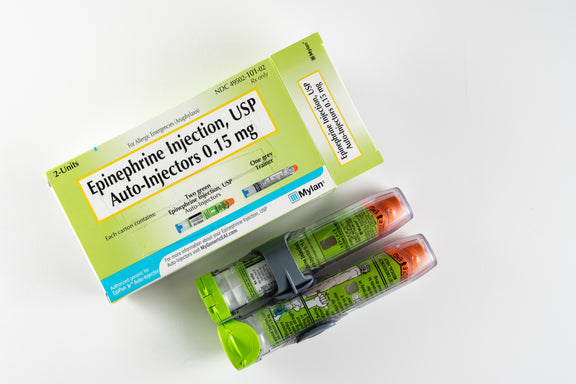Learn what hives are, the most common reasons for hives, and why you should do early allergen introduction.
What are hives and why should I be concerned?
Hives are raised, inflamed bumps that can appear on the skin in clusters or patches. They are often uncomfortable and painful, with a burning or itchy sensation. Hives can last minutes or hours and can happen for many different reasons.
More important than the appearance of hives is finding the underlying cause. Hives are symptoms that your child’s immune system is trying to fight off a foreign invader such as allergy-causing foods.
The 4 most common reasons for hives
- Environmental - extreme heat or cold, direct sunlight
- Mechanical - friction from clothing, abrasive material on skin
- External - soaps, perfumes, cleaning products, sensitivity to materials, bug bites, leaves and foliage
- Internal - allergy or intolerance to food or medication
If your child breaks out in a rash it may be difficult to determine the root cause. Children try new things every day, pinpointing which trigger is to blame is not easy. If your child has hives it is always best to reach out to your doctor if you do not know the cause.
An internal reaction to food is by far the most common reason for hives in children. Food allergies affect 1 in 12 children, with numbers rising in recent years. In addition to hives, other common symptoms include:
- Stomach pain/abdominal pain
- Swelling of the face, lips, and eyes
- Difficulty breathing
- Cough
- Sneezing
- Diarrhea
Learn more on food allergy symptoms here.
Despite its common occurrence, food allergies remain one of the most deadly diseases for children under 10.
Even into adulthood food allergies remain a threat to our health. 38% of adults with food allergies visit an emergency room in their lifetime.
How can I prevent hives?
There is no one way to avoid hives. Preventing hives requires a parent to be attentive to changes in your babies' lives. New laundry detergent, a trip to the park, or a treat from a friend, there is a spectrum of possible causes.
Food allergies remain one of the most common and worrisome reasons for hives. Peanut, egg, and milk are the three most prevalent allergens in children. These ingredients linger in cookies, snacks, and a wide variety of food products.
The key to introducing food allergens is early and sustained allergen introduction. Ready. Set. Food! is designed to help parents with our safe and all-natural solution to introduce allergenic foods.
Ready. Set. Food! is a daily supplement that gently introduces your baby to peanut, egg, and milk.
With Ready. Set. Food! your child can get a head start on early allergen introduction.

Pros And Cons Of Sippy Cups
Thinking about giving your little one a sippy cup? Today, we’ll co...

What Toddlers Eat In A Day: 12-18 Months Old
Looking for ideas of what to feed your 12-18 month old little one? ...

New Study Shows That Infant Anaphylaxis Usually Resolves With One Epinephrine Dose
A recent study has shown that, when infants experience severe aller...

Pregnancy Nutrition: What To Eat In The First Trimester
What to eat in the first trimester that will nourish your body, pro...

Formula Feeding Amounts: How Much Formula Should You Feed Baby Per Day?
How much formula should baby drink per day? It depends on their age...

What Baby Eats In A Day: 6-12 Months Old
Looking for ideas of what to feed your 6-12 month old little one? H...
All health-related content on this website is for informational purposes only and does not create a doctor-patient relationship. Always seek the advice of your own pediatrician in connection with any questions regarding your baby’s health.
These statements have not been evaluated by the Food and Drug Administration. Products are not intended to diagnose, treat, cure or prevent any disease. If your infant has severe eczema, check with your infant’s healthcare provider before feeding foods containing ground peanuts.

